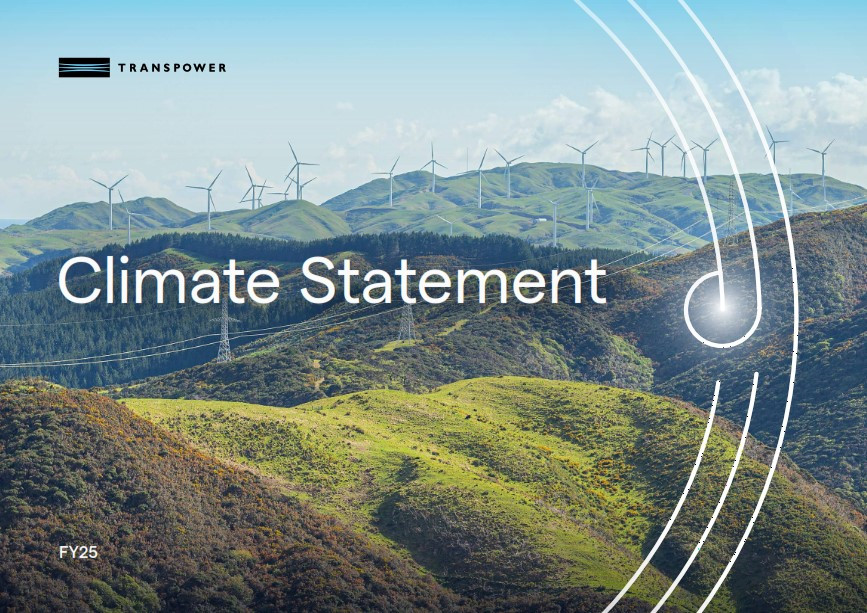Climate change is integral to our business, both in terms of the risks it presents to our assets and how it drives electrification.
For the year ending 30 June 2025 we have produced our second Climate Statement, prepared in compliance with the Aotearoa New Zealand Climate Standards (NZ CS 1, NZ CS 2 and NZ CS 3) published by the External Reporting Board in December 2022.
You can read our FY2025 Climate Statement here.
Image

Our Climate Statement includes:
- Our Board’s role in overseeing climate-related risks and opportunities, and management’s role in assessing and managing those risks and opportunities.
- How climate change is currently impacting us and how it may do so in the future. This includes our climate change scenario analysis, the climate-related risks and opportunities we have identified (including anticipated impacts and financial impacts) and how we will position ourselves as the global and domestic economy transitions towards a low-emissions, climate-resilient future.
- How our climate-related risks are identified, assessed, and managed and how these processes are integrated into existing risk management processes.
- How we measure and manage climate-related risks and opportunities.
We are committed to providing climate-related disclosures for several reasons:
- We are a debt issuer under the NZX and have a number of subsidiaries and carry out group reporting.
- We are a reporting organisation under the Climate Change Response (Zero Carbon) Amendment Act 2019 (Zero Carbon Act).
- We are a signatory to the New Zealand Climate Leaders Coalition and have committed to voluntarily measuring and reporting greenhouse gas emissions, setting a public emissions reduction target and working with our suppliers to reduce their emissions. You can read more about our latest emissions and what we’re doing to manage them here.
Related documents